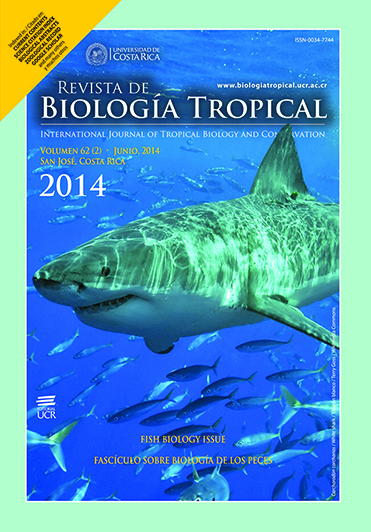Abstract
The subaquatic vegetation of Los Petenes, Campeche, Mexico, stands out due to its considerable floristic diversity, composed of a great variety of sea grasses and several species of the genus Caulerpa sp. This is a genus of ecological relevance, with the invasive species in the Mediterranean, with negative impact on several native sub-aquatic plants; nevertheless, little is known about the demography and population dynamics of Caulerpa species and their contribution to food webs. Thus the main objective of this study was to describe the demographics of Caulerpa paspaloides var. wudermanni, using the number of stolons, complete and incomplete fronds, the diameter of the stolons and the biomass. The information was used to determine the growth rate (λ) of this species. The study was conducted in the Biosphere Reserve of Los Petenes, which is located in the Northwest of the state of Campeche. The submerged aquatic vegetation (SAV) in the Petenes Biosphere consists of monospecific and mixed populations of seagrass species (Thalassia testudinum, Halodule wrightii and Syringodium filiforme). Although chlorophytes, brown algae and red algae, are fundamental elements in the specific composition of the SAV in Petenes, several species of Caulerpa are prominent because of their coverage and abundance. In May and June of 2010, significant differences in the quantity of stolons, their diameter, incomplete and complete fronds, and the size of the stolons and rhizomes, were observed. In 2010, the finite population growth rate (λ) was 2.38±0.1571 for individuals and 1.20±0.1356 for the population, and in 2011 the values of λ were 1.80±0.3608 and 1.35±0.1571, respectively. From these results it can be concluded that the population is growing; however, growth is controlled by biotic and abiotic factors. Despite there was no apparent threat, we suggest continuing the demographic studies of C. paspaloides var. wurdemannii, as well as of other species of the same genus, not only to detect invasion or explosive growth, but also their presence indicated low oxygen levels and high sulphates.Comments

This work is licensed under a Creative Commons Attribution 4.0 International License.
Copyright (c) 2014 Revista de Biología Tropical
Downloads
Download data is not yet available.






